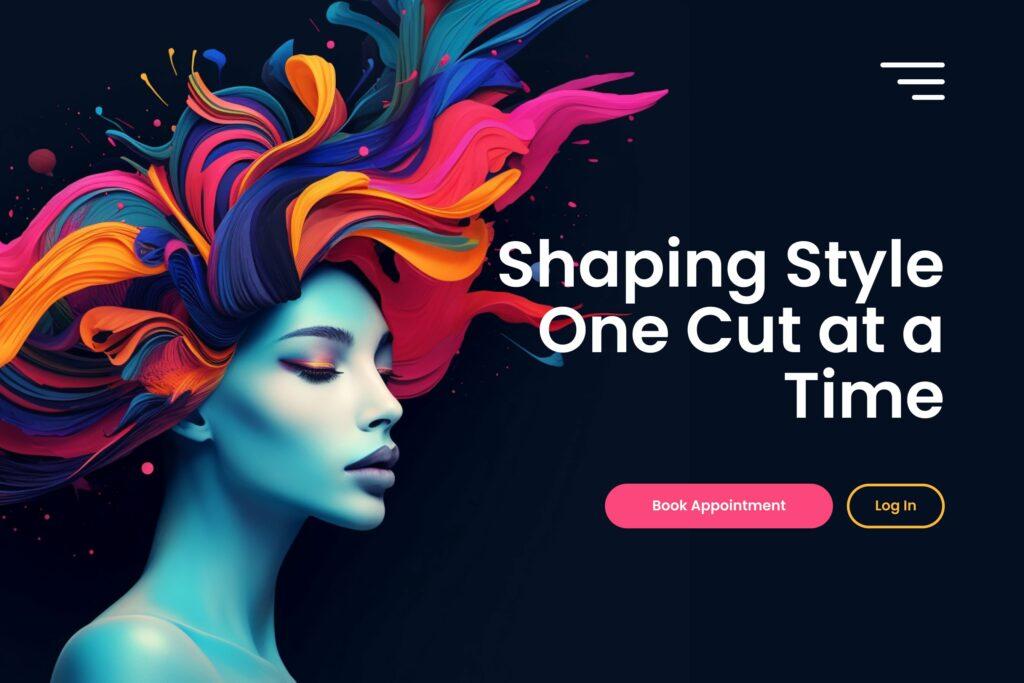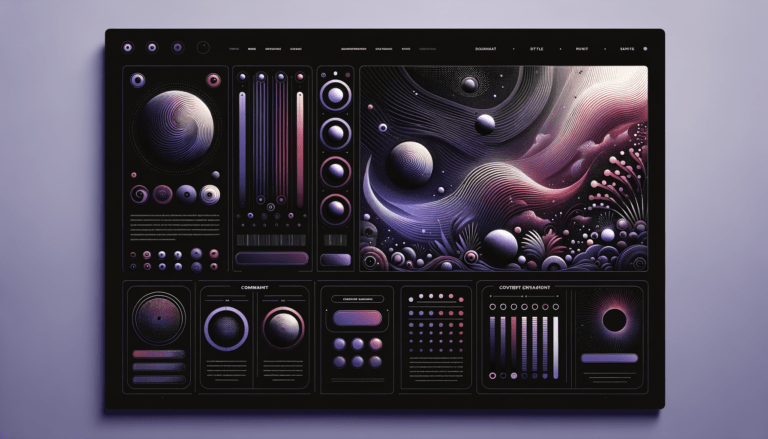
Table of Contents
A user-centered design strategy provides the framework for creating digital experiences that fulfill the unique needs and preferences of your customers. By prioritizing the users’ needs, businesses can design websites that aren’t just functional, but also genuinely engaging. At Dream Engine, our expertise in user-centered design allows us to create unique digital experiences that directly contribute to business success.
Deep Diving into User-Centered Design
At its core, User-Centered Design (UCD) is a process steeped in understanding and addressing user needs and behaviors. This method goes beyond mere aesthetics; it’s about ensuring that your website, app, or digital product provides a truly intuitive, engaging, and effective experience for the user.
Example 1
Consider a well-known platform like Airbnb. They’ve adopted a UCD approach, making it incredibly easy for users to search for accommodations, filter by their preferences, see clear photos and descriptions, and ultimately book their stay. Every element of their platform, from the visual layout to the navigation, is designed with the user in mind. The result is a smooth and satisfying user experience, which leads to repeated use, loyalty, and increased conversion rates.
Example 2
Another great example of UCD is the Spotify app. It doesn’t just offer music streaming; it understands and caters to user behaviors and preferences. It curates personalized playlists, suggests new music based on listening history, and allows easy playlist creation and sharing. All these features stem from a deep understanding of users’ desires, creating a digital experience that resonates with their audience and keeps them engaged for longer periods.
Summary
In the same way, UCD requires businesses to conduct thorough research to understand their users’ demographic profile, expectations, and interaction patterns with their site. For instance, an e-commerce site might find that their users prefer a quick, one-click checkout process, or that they value customer reviews very highly. Implementing these insights into the site design would result in a more user-friendly experience, encouraging higher conversion rates and customer loyalty.
In all Dream Engine projects, we prioritize this user-centric approach. We take time to understand your audience, their needs, and their behaviors, translating these insights into a design that truly resonates with your users and drives your business goals.
The Interplay of Aesthetics and User-Centered Design
The visual appeal of a website is more than just an attractive facade. It serves as an influential factor in user engagement, setting the tone for the user’s journey through your site. Users are naturally drawn to aesthetically pleasing designs. However, a visually captivating design becomes less impressive if it’s challenging to navigate or interact with. That’s where the essence of user-centered design comes into play—it’s about striking a balance between aesthetics and functionality.
Example 1
Let’s take Apple’s website as an example. Apple’s design language is well known for its minimalistic yet appealing aesthetics. Their website is no exception. The clean design, combined with high-quality imagery and crisp typography, immediately captivates users. But what truly makes their website stand out is its user-centric functionality. Clear and concise menus, intuitive navigation, easy access to support, and a seamless online shopping experience work together to create a compelling user experience that aligns with the company’s design-led brand identity.
Example 2
Another example would be Medium, a popular online publishing platform. The website maintains a clean and minimalistic design, which is pleasing to the eye. However, it doesn’t stop there. The site’s layout, navigation, and content organization are all designed for seamless and straightforward user interactions. The balance of aesthetics and functionality makes for an engaging reading experience, encouraging users to spend more time on the site and come back regularly.
Summary
At Dream Engine, we understand the importance of this balance. We believe that aesthetics and functionality are two sides of the same coin. Our team excels at integrating compelling visuals with user-friendly design elements to create websites that not only look beautiful but offer an easy and intuitive user experience. Through our user-centered approach, we deliver websites that captivate your audience at first glance and keep them engaged through their entire visit.
Streamlining Website Navigation through User-Centered Design
Effective website navigation is akin to a well-structured road map—it guides your users through the journey on your website, ensuring they can seamlessly find the information they’re seeking. Poor navigation can lead to user frustration and a swift exit, damaging your user engagement metrics and, ultimately, your conversion rates. However, when you apply user-centered design principles to your website’s navigation, you create an intuitive pathway that boosts user engagement and fosters a positive experience.
Example 1
Consider the case of Dropbox. The file hosting service has one of the most user-friendly websites, thanks in large part to its intuitive navigation. Its menu is clear and concise, neatly categorizing its offerings under easily understandable headers. This clean organization makes it simple for users to locate the information they need without sifting through unnecessary clutter, enhancing user satisfaction and engagement.
Example 2
Etsy, a global marketplace for unique and creative goods, is another excellent example. Given the vast array of products and sellers on their platform, Etsy has created a robust but straightforward navigation system that lets users filter and search in multiple ways. The result is a user-centric navigation system that allows shoppers to easily browse through a sea of options without feeling overwhelmed, boosting both engagement and sales.
Summary
We understand the critical role that intuitive navigation plays in the user experience. We apply user-centered design principles to craft well-structured, easy-to-navigate websites. By understanding your users’ needs and expectations, we design a navigation structure that aligns with their natural browsing patterns. The result is a smooth, effortless journey through your website, enhancing user engagement and elevating the overall user experience. This approach not only keeps users on your site longer but also encourages them to return, creating loyal customers who are more likely to convert.
Mobilizing User-Centered Design for Optimal User Experience
The era of mobile-first design is upon us. According to Statista, as of Q1 2023, nearly 60% of all website traffic worldwide was generated through mobile phones. With mobile browsing becoming more prevalent, it’s vital to ensure that your website provides a seamless experience across all devices, especially on mobile. Integrating user-centered design principles into mobile interface design enhances the accessibility, intuitiveness, and engagement of your website, no matter the device.
Example 1
Consider the example of The New Yorker, a popular magazine known for its in-depth articles and cultural commentary. The New Yorker’s mobile site is designed with the user’s convenience in mind. The typography, spacing, and structure are optimized for smaller screens, ensuring that long-form articles are easily readable even on the go. The navigation is simplified and intuitive, allowing users to quickly find and explore different categories and sections.
Example 2
Similarly, Starbucks offers an excellent example of user-centered mobile design. Their mobile app and website are simple, user-friendly, and full of features tailored to the mobile user. Customers can locate stores, customize their drink, place an order, and make a payment, all from the comfort of their mobile devices. This mobile-first, user-centered approach has contributed significantly to the brand’s customer engagement and loyalty.
Summary
At Dream Engine, we acknowledge the power and prevalence of mobile browsing. We incorporate user-centered design principles into our mobile interface designs to create accessible and intuitive experiences. We understand that what works on a desktop might not translate effectively on a smaller screen. So, we focus on simplifying navigation, optimizing images, ensuring readability, and streamlining content for the mobile interface. By doing so, we ensure your website resonates with your mobile users, enhancing engagement and facilitating conversions across all devices.
Evaluating User-Centered Design Success
Measuring the performance of your user-centered design involves examining various key performance indicators (KPIs), such as bounce rates, conversion rates, and user satisfaction scores. Additionally, continual website refinement is driven by analytics and user feedback, shaping the design evolution over time. Dream Engine leverages data-driven insights to steer design decisions, ensuring your website performs optimallyand aligns with your users’ evolving needs.
Conclusion
The value of a user-centered design in enhancing your website’s effectiveness and driving customer engagement is irrefutable. With Dream Engine, you’re not just getting a design team; you’re gaining partners committed to implementing user-centered design principles in all their projects.
It’s time to put your users first.
Ready to take your Website to the next level?
Subscribe for more Useful Content
This publication contains general information only and Dream Engine is not, by means of this publication, rendering accounting, business, financial, investment, legal, tax, or any other professional advice or services. This publication is not a substitute for such professional advice or services, nor should you use it as a basis for any decision, action or omission that may affect you or your business. Before making any decision, taking any action or omitting an action that may affect you or your business, you should consult a qualified professional advisor. You acknowledge that Dream Enigne shall not be responsible for any loss sustained by you or any person who relies on this publication.



